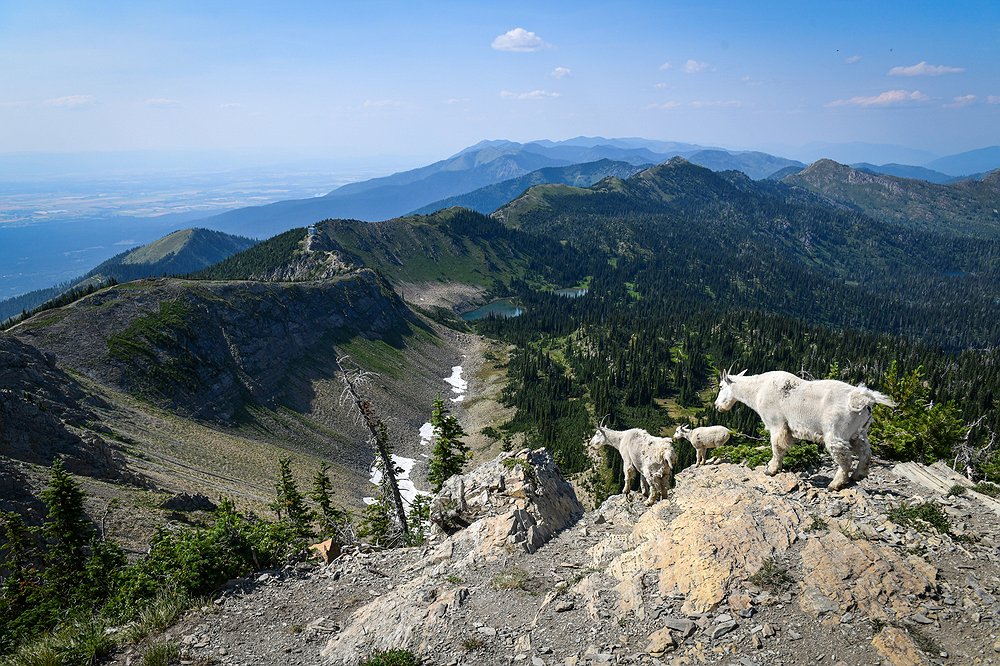Description
Fischer Gangemi never really considered a career outside of the Forest Service.
He grew up on the trails and rivers of Flathead National Forest, so making a career out of outdoor recreation made sense to him, even though the work was often unglamorous.
For the past 11 years, Gangemi has spent every summer as a backcountry ranger with the Spotted Bear Ranger District, clearing trails and picking up unburied human waste in the Bob Marshall Wilderness Complex. In his off seasons, he volunteers in other national forests. His dedication to the job has earned national accolades and one colleague described him as “a backcountry icon in the Bob.”
None of that mattered last Saturday, when Gangemi received the phone call he had been dreading. Through tears, his boss told him that he was being laid off.
About 360 Forest Service employees across Montana received similar calls following a Feb. 11 executive order that promised to “remake America’s federal workforce.” Former Flathead National Forest employees estimated that as many as 40 blue collar workers were released from local ranger districts, prompting dire forecasts for the future of the forest.
“People are not going to be able to hunt, fish, bike, recreate in the same way this year,” said Gangemi. “I feel sick knowing the legacy of that work is going away.”
Other terminated employees echoed Gangemi’s concerns, painting vivid pictures of overflowing pit latrines, ravaged campsites and unpassable hiking trails.
Last summer, Victoria Winch’s trail crew cleared over 300 miles of trail in the Bob Marshall Wilderness Complex in between shifts at the historic Schafer Meadows Ranger Station. After last week’s purge, only one crew member remains. Winch expects the station will remain closed through the summer, a first since the Forest Service started operations in Schafer Meadows 100 years ago.
“It’s a devastating blow because of all the hard work people have put in for 100 years,” said Winch. “We have the shadow of all those people, the past forest workers, looking over our shoulders, and I am just in disbelief that it’s not happening anymore. It just breaks my heart.”
Bobby Oshaben, a former forestry technician, called the mass terminations reckless and said the Trump administration’s assertion that cuts would improve government efficiency was short-sighted.
“Anyone in this field will tell you this was not going to improve the efficiency of our land management,” said Oshaben. “The Forest Service was already struggling to hire enough people.”
As a member of the timber presale preparation crew, Oshaben prepared timber plots for bidding. Flathead National Forest typically produces between 60 and 90 million board feet of timber each year, enough to frame 6,000 mid-sized homes. This year, Oshaben said the agency doubled its yearly harvest targets, but he doubts the downsized work crews will be able to keep up with the workload.
“I think that people don’t realize how much of our economy depends on our national forests,” said Oshaben. He estimated that the F.H. Stoltze Land and Lumber Company mill in Columbia Falls gets half of its lumber supply from Forest Service lands and warned that rising lumber prices could trickle down to builders and home buyers.
Montana’s politicians have largely voiced support for the layoffs.
“It's long overdue to put the safety of Montanans and the health of our forests first. Glad [the Department of Government Efficiency] is taking a look,” wrote Gov. Greg Gianforte in a Facebook post Wednesday, referencing billionaire Elon Musk’s efforts to downsize the federal government.
In a post to X, U.S. Rep. Ryan Zinke suggested there were “a ton of fantastic job openings in Montana timber, construction, biosciences, agriculture, outdoor recreation, and other industries,” for recently terminated federal workers.
Both Gianforte and Zinke are Republicans.
RECENT CHANGES to the Forest Service’s internal hiring structure made the agency especially vulnerable to Trump's executive order, which targeted workers on probationary status.
In 2024, the agency transferred between 1,300 and 1,400 positions from temporary seasonal to permanent seasonal status. Employees making the switch were subject to a one-year probationary period, regardless of their history with the Forest Service.
Barbara, who asked that her last name not be used, was skeptical. When she started with the Forest Service in 1982, President Ronald Reagan was making his own promises to downsize the federal workforce. By 1985, the Forest Service had lost about 10% of its workforce.
The experience taught her how volatile the agency’s budget could be, and she didn’t want to make the change so close to retirement. Barbara asked if she could keep working as a forest protection officer at Hungry Horse Reservoir as a temporary seasonal worker.
“I was told you can either be promoted or terminated,” she said.
Nine months later, Barbara received a memorandum informing her that she was being terminated due to poor work performance, despite never receiving a poor performance review. In fact, her supervisors often asked her to train new hires due to her stellar track record and widespread expertise. Over the course of 22 field seasons, Barbara accumulated expertise in everything from timber sales to fire to backcountry trails maintenance.
“Every single supervisor knows the value I bring,” said Barbara. “It’s like the perfect employee record.”
The American Federation of Government Employees filed a lawsuit Wednesday alleging that the Office of Personnel Management committed “a massive fraud on the federal workforce by lying about federal workers’ ‘performance.’” Barbara and the other terminated employees interviewed for this story are represented in another class action lawsuit filed last Friday, challenging the legality of the terminations.
Barbara is trying to access the documentation to prove her consistent work performance, but her credentials have been wiped from the government computer system. Calls to human resources go unanswered. Ditto for a call to her boss, requesting a letter to support her unemployment application.
“I felt like I went from visiting the old family home to visiting some stranger’s house where they don’t live anymore,” she said.
Still, when asked if she would take her job with the Forest Service back, if given the chance, Barbara and every other worker interviewed for this story gave the same answer: yes.
“That’s all I want,” said Victoria Winch. “I just want to go back to my normal duties, be in the places I love. I just want the privilege of doing my job again.”
Reporter Hailey Smalley can be reached at [email protected] or 758-4433.
 A family of mountain goats stand atop Mount Aeneas in the Jewel Basin in Flathead National Forest on Saturday, July 27, 2024. (Casey Kreider/Daily Inter Lake)
A family of mountain goats stand atop Mount Aeneas in the Jewel Basin in Flathead National Forest on Saturday, July 27, 2024. (Casey Kreider/Daily Inter Lake)
Casey Kreider
 The U.S. Forest Service Flathead National Forest Supervisor's Office on Wolfpack Way in Kalispell on Tuesday, Feb. 18. (Casey Kreider/Daily Inter Lake)
The U.S. Forest Service Flathead National Forest Supervisor's Office on Wolfpack Way in Kalispell on Tuesday, Feb. 18. (Casey Kreider/Daily Inter Lake)
Casey Kreider
Other Related News
02/23/2025
KALISPELL One Kalispell Tree Farm isnt quite what youd expect Tibetan yaks help keep the ...
02/23/2025
German opposition leader Friedrich Merzs conservatives were on course for a lackluster vic...
02/23/2025
Billionaire Tesla and SpaceX CEO Elon Musk is doubling down on an email sent to federal wo...
02/23/2025
Russia launched more strike drones into Ukraine overnight on Saturday than in any other si...
02/23/2025












